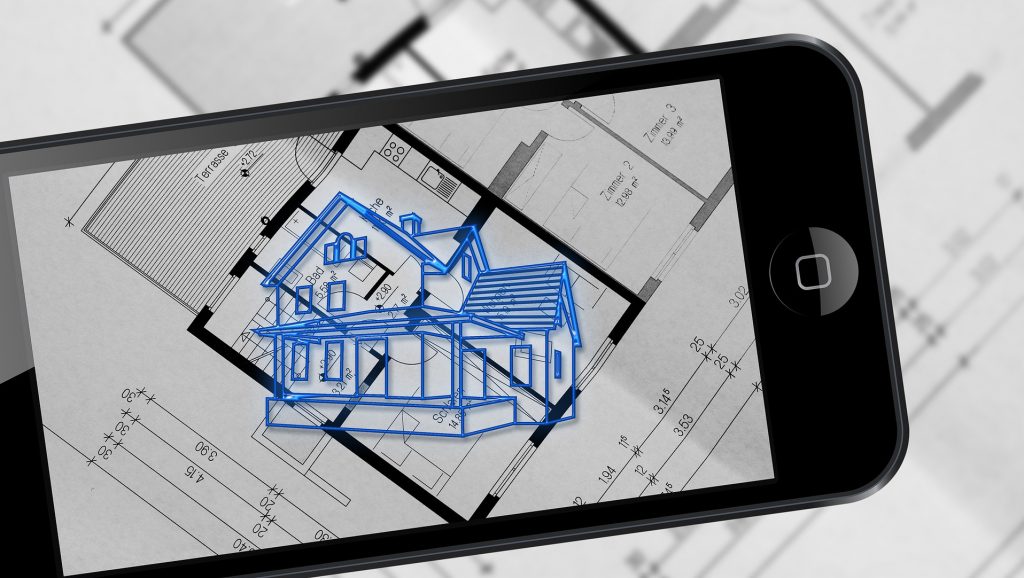Welche API zum Einbinden von Augmented Reality ins
Web Sie kennen sollten.
Mozilla arbeitet schon seit Längerem an JavaScript-APIs, die es Nutzern ermöglichen sollen, Virtual Reality (VR) und Augmented Reality (AR) Projekte im Open Web zu erstellen und zu teilen.

Im letzten Jahr wurde die Firefox-Desktopunterstützung für die WebVR 1.1 API offiziell gestartet. Mit diesem Entwurf der API konnten frühe Anwender wie WITHIN 3D-Content im Web verbreiten, die auf einer Vielzahl von Geräten hervorragend funktionierten wie z.B. Smartphones und Cardboard Viewern bis hin zu vollwertigen, immersiven VR-Headsets.
Die Expansion von WebVR.
WebVR hat maßgeblich zur Akzeptanz von VR beigetragen, so dass mehr Menschen 3D-Inhalte ohne teure Headsets erleben können. Es war auch eine enorme Zeitersparnis für Content-Ersteller, die testen und überprüfen müssen, ob Ihre Arbeit auf jeder Anzeigeplattform gut funktioniert. Eine stabilere API für die Arbeit mit 3D-Inhalten kann ein breiteres Publikum finden und sie reduziert die Arbeit der Rework-Ersteller, um einer Vielzahl von Geräten das Präsentieren von großartigen Weg-Erlebnissen zu ermöglichen.
Mozilla engagiert sich stark und bringt Menschen aus der gesamten Branche zusammen, um eine Standardmethode zur Darstellung von 3D-Inhalten in Browsern zu entwickeln. Diese Arbeit hat gute Möglichkeiten für Designer und Programmierer geschaffen, um webbasierte VR-Erfahrungen mit einer wachsenden Nutzerzahl zu teilen. Zudem hat Firefox durch die WebVR-Unterstützung in Browsern begonnen, VR- und AR-Inhalte aus Silos und Headset-Speichern zu befreien und im offenen Web zugänglich zu machen.
Das Versprechen von Mixed Reality.
Mixed Reality wird eine leistungsstarke Plattform sein, die hochinteressane und emotional ansprechende, immersive Inhalte ins Netz bringt. Wir bei jedem anderen kreativen Medium möchte Mozilla, dass es allgemein zugänglich ist, damit neugierige Besucher die nächste Generation digitaler Medien erleben können, ohne hohe Preise für einen High-End-Viewer ausgeben zu müssen.
Heute macht die Branche einen weiteren Schritt in Richtung dieser Bestrebungen. Mozilla hat den Anspruch, die Anzahl der Plattformen und Geräte zu erweitern, die VR- und AR-Inhalte anzeigen können. So kann beispielsweise die Kamera der meisten Smartphones verwendet werden, um Informationen über die physische Realität zu überlagern – wenn sie über eine Reihe von Anweisungen verfügt wie dies zu tun ist.
Die Experimente werden mit einer neuen JavaScript-API mit der Bezeichnung WebXR Device API fortgesetzt. Mozilla geht davon aus, dass diese Spezifikation WebVR rechtzeitig ersetzen und Nutzern eine bessere User Experience bieten wird, als das dies beim heutigen WebVR der Fall ist.
Was ist neu in WebXR?
Die neue WebXR Device API unterscheidet sich durch 2 neue Ziele von WebVR:
- Support einer größeren Vielfalt von Benutzereingaben wie Sprache und Gesten, die den Benutzern Optionen für die Navigation und Interaktion in virtuellen Räumen bieten.
- Um eine technische Grundlage für die Entwicklung von AR-Erfahrungen zu schaffen, können Autoren reale Medien mit kontextuellen Überlagerungen integrieren, die die User Experience verbessern.
Details zur WebXR Device API finden Sie in der Immersive Web Community Group. Es wird erwartet, dass viele talentierte Personen, die an WebVR gearbeitet haben, auch an der WebXR Device API arbeiten werden, zusammen mit neuen Mitarbeitern wie Magic Leap.
AR im Web.
AR und VR bieten eine ganz andere Immersion als traditioneller Content. Einige Museen bieten AR-Erfahrungen an, um den Ausstellungen Tiefe und Kontext zu verleihen. Weitere Projekte umfassen pädagogische Inhalte, vom Geologieunterricht bis zu Straßenkämpfen im vom Krieg erschütterten Syrien.
Was kann AR im Web bewirken? Es gibt bereits Beispiele, die leistungsfähige Anwendungsfälle demonstrieren. So können Nutzer z.B. vorher testen, wie das Sofa in Ihrem Wohnzimmer aussehen wird. AR kann das Online-Shopping zu einem sinnlicheren Erlebnis machen, so dass Sie neue Produkte in Ihrem Zuhause auf eine sehr realistische Weise testen können. Es ist eine großartige Ergänzung zum Online-Shopping, besonders da Unternehmen anfangen, Online-Visualisierungen von physischen Produkten anzubieten.
Mozilla hat einige wichtige Grundsätze definiert, die die Nutzung der Medien der nächsten Generation im Interesse der Nutzer ermöglichen wird.
- Die Privatsphäre der Nutzer soll geschützt werden. Sie sollten einem Kunstgeschäft keine Bilder Ihres Wohnzimmers bereitstellen müssen, um zu sehen, wie ein Poster an Ihrer Wand aussehen würde.
- AR und VR sollen einem breiten Publikum zugänglich gemacht werden. Barrieren zur Nutzung der Technologie, wie z.B. ein etwas älterer PC, sollen abgebaut werden.
- Entwickler sollen in die Lage versetzt werden, Inhalte zu erstellen, die auf allen Geräten funktionieren, damit Benutzer auf Mixed-Reality-Erfahrungen mit dem Gerät zugreifen können, das sie besitzen oder verwenden möchten.
- VR- und AR-Content soll von jedermann erstellt werden können und nicht nur von großen Studios und bekannten Marken.
Die WebXR-Community arbeitet an Entwürfen für Spezifikationen, die einige der Einschränkungen heutiger drahtloser Geräte berücksichtigen. So kann beispielsweise die Erstellung einer Skybox-Einstellung, mit der Sie das Hintergrundbild einer Website ändern können. Es wird auch an einer Möglichkeit gearbeitet, die World-Sensing-Fähigkeiten früherer AR-Plattformen im Internet zu präsentieren, damit Entwickler bestimmen können, wo sich Oberflächen befinden, ohne komplexen Computer Vision Code auf einem akkubetriebenen Gerät ausführen zu müssen.
Support in Firefox.
Es ist schon ein enormer Fortschritt, dass Firefox heute WebVR unterstützt, so dass Menschen aktuelle Technologien nutzen können, während weiter an der Implementierung der Spezifikation der nächsten Generation gearbeitet wird. Es wurde mit der Arbeit begonnen, um die WebXR-Unterstützung in Firefox hinzuzufügen. Eine frühe Implementierung wird in den kommenden Monaten in Firefox Nightly verfügbar sein, so dass Entwickler und Early Adopter sie nutzen können.
Einige Teile der WebXR-Spezifikation sind noch in Bearbeitung. Anstatt auf eine endgültige Version der Spezifikation zu warten, wird Mozilla mit der aktuell verfügbaren Technologie fortfahren und sich an alle technischen Änderungen im weiteren Verlauf anpassen. Die Roadmap für den kommenden Firefox Reality Browser wird der Firefox-Desktop-Version ähnlich sein, mit anfänglichem Support für immersives Surfen mit WebVR und WebXR-Support.
Mozilla plant, mit der Zeit WebXR überall dort zu unterstützen, wo derzeit WebVR unterstützt wird, einschließlich Windows, Linux, macOS und Android/GeckoView-Plattformen. Mozilla wird WebVR solange unterstützen, bis die meisten beliebten Webseiten und Suchmaschinen den Übergang zu WebXR abgeschlossen haben.
Aktuelle AR-Experimente.
Wenn Sie es kaum erwarten können, mit AR etwas herum zu experimentieren, können Sie sich hier etwas austoben. Mit Mozillas WebXR Viewer für iOS können Sie einen Blick in die Zukunft direkt auf Ihrem iPhone oder iPad werfen. Es handelt sich bei dieser App um ein Experiment, das auf einem Vorschlag für eine vorläufige API basiert, die im letzten Jahr erstellt wurde. Es wird derzeit für die Verwendung der WebXR Device API vorbereitet.
Wir haben diese App entwickelt, um mit AR zu experimentieren und herauszufinden, wie einfach es war, sie mit Apples ARKit auf iOS zum Laufen zu bringen. Wenn Sie sich den Code für die iOS-App ansehen möchten, können Sie dies auf GitHub machen. Für Android-Nutzer hat Google ein ähnliches Experiment, bei dem es um die frühzeitige Unterstützung des immersiven Webs geht.
Vielen Dank für Ihren Besuch.


